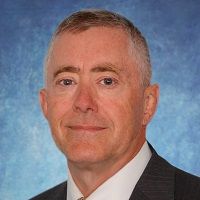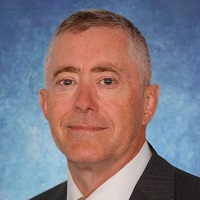What to Do With Your 401(k) When You Leave Your Job
Instead of cashing out or leaving your 401(k) account behind, consider consolidating your savings in your new employer's plan. Here's how.


It goes without saying that the idea of people staying with a single employer for their entire working lives, and receiving an engraved gold watch and a pension upon retirement, is out of date.
According to the U.S. Bureau of Labor Statistics (BLS), the youngest Baby Boomers, born between 1957 and 1964, held 12.7 jobs on average from ages 18 to 56.
Furthermore, the BLS found that, in January 2022, the median number of years that paid employees had been with their present employer was 4.1 years.
From just $107.88 $24.99 for Kiplinger Personal Finance
Become a smarter, better informed investor. Subscribe from just $107.88 $24.99, plus get up to 4 Special Issues

Sign up for Kiplinger’s Free Newsletters
Profit and prosper with the best of expert advice on investing, taxes, retirement, personal finance and more - straight to your e-mail.
Profit and prosper with the best of expert advice - straight to your e-mail.
In today’s highly mobile workforce, consumers need to keep on top of their hard-earned retirement savings. If they’re not careful, they can lose track of their 401(k) savings in their prior employers’ plans when they switch jobs.
Historically, it has not been easy, to put it mildly, for Americans to take their 401(k) balances with them when they leave one employer for another. Without assistance from employers and their plan recordkeepers, the process can take months, costing a lot of time and money. Too often, Americans find it easier to leave their 401(k) accounts behind in their previous employers’ plans, or prematurely cash out their 401(k) accounts, after they depart.
Neither of these options is conducive to helping Americans save for a financially secure retirement.
Why you shouldn’t cash out
According to the Employee Benefit Research Institute (EBRI), the retirement services industry’s gold-standard research provider, Americans cash out their 401(k)s after leaving or changing jobs to the tune of $92 billion per year — and pay taxes and penalties on what they cash out.
In addition to paying taxes and penalties on the 401(k) savings they cash out from their previous employers’ plans, those who cash out also forfeit what their 401(k) accounts could have earned if they had remained incubated and invested in the national 401(k) system.
Our own research indicates that a plan participant who chooses to preserve a $7,000 401(k) balance at age 25, instead of cashing it out, would see that amount grow to $86,912 that they can use for income in retirement. Furthermore:
- Preserving a $7,000 401(k) balance at age 25 and another $7,000 balance at age 35 would provide $133,213 in retirement income.
- Preserving $7,000 401(k) accounts at ages 25, 35 and 45, as they go along their journeys toward retirement, would cause those balances to grow to $157,878 in total.
Cashing out can make a big dent in an American’s retirement prospects. The Center for Retirement Research at Boston College found in one of its studies that premature 401(k) account withdrawals can decrease Americans’ income in retirement by an average of 25%.
Why you shouldn’t leave behind your 401(k) savings
Preserving 401(k) savings instead of cashing out when leaving and/or switching jobs is far better than cashing out, but letting 401(k) accounts sit in prior-employer plans isn’t the best course of action either.
Under the Economic Growth and Tax Relief Reconciliation Act of 2001, 401(k) plan sponsors were given the authority to automatically roll small accounts from terminated employees with up to $5,000 into investment vehicles known as safe-harbor IRAs. That same law made principal-protected products — which haven’t yielded significant returns due to low interest rates following the 2008 financial crisis — the only default investment options permitted in safe-harbor IRAs. In addition, many safe-harbor IRAs charge as much as $50 or more in annual administration fees, according to publicly available information.
In other words, leaving behind a 401(k) account in a former employer’s plan, and not taking action to consolidate your savings, can lead to account depletion over the long term.
And the SECURE 2.0 Act of 2022 raised the mandatory distribution limit on small accounts that plan sponsors can automatically roll out of their plans and into safe-harbor IRAs from $5,000 to $7,000, as of December 31, 2023.
This means many more job-changing Americans are at risk of having their stranded accounts in former-employer plans automatically moved into safe-harbor IRAs. In fact, EBRI estimates that throughout this year, 6.7 million Americans who participate in 401(k) plans will switch jobs — and on a one-time basis beginning this year, an additional 1.1 million Americans who left behind small balances in their former employers’ 401(k) plans could immediately become eligible to have their savings wind up in safe-harbor IRAs.
What should you do?
Instead of cashing out or leaving 401(k)s behind, hardworking Americans who switch jobs now have a much better chance of receiving meaningful assistance with taking their 401(k) savings with them to their new employers — and consolidating them in the active accounts in their new employers’ plans.
The Portability Services Network’s digital auto portability solution, which automates the process of moving 401(k) account balances with under $7,000 from plan to plan, went live in November. (I am the CEO of Portability Services Network.) This retirement services industry utility includes, as founding members, some of the largest 401(k) plan recordkeepers.
If the recordkeeper for an employee’s new and/or former employers’ plans are part of the Portability Services Network, consumers can reach out for assistance with 401(k) asset transportation and consolidation.
Don’t let your 401(k) savings be depleted when you switch jobs. Take your 401(k) savings with you from job to job, at every point along your journey to retirement — and optimize your income.
Related Content
- 401(k) Plans: 10 Things You Should Know
- What Is a Starter 401(k)?
- What Is a Safe Harbor 401(k)?
- What to Do if Your Employer Stops Its 401(k) Match
- Pension vs 401(k) Plans: Which Is Better?
Profit and prosper with the best of Kiplinger's advice on investing, taxes, retirement, personal finance and much more. Delivered daily. Enter your email in the box and click Sign Me Up.

Spencer Williams is Retirement Clearinghouse’s Founder, President and CEO and also is the President and CEO of Portability Services Network, LLC. Retirement Clearinghouse is a specialized provider of retirement savings portability and account consolidation services for America’s mobile workforce. Portability Services Network, LLC is a retirement industry-led utility dedicated to the industry-wide adoption of auto portability. Williams is an innovator, including RCH’s singular innovation, Auto Portability, specially designed to help low-income and minority workers. Portability Services Network is built on a foundation of Retirement Clearinghouse’s intellectual property, technology and operations.
-
 Holiday Tax Scams: 'Tis the Season to be Wary
Holiday Tax Scams: 'Tis the Season to be WaryTax Scams Navigating tax tricks of the holiday season may be daunting, but don't let that destroy your festive spirit
-
 Metro by T-Mobile Is Giving Away This Samsung Galaxy A16: Which Plans Are Eligible?
Metro by T-Mobile Is Giving Away This Samsung Galaxy A16: Which Plans Are Eligible?Metro by T-Mobile is offering free Samsung Galaxy A16 phones on eligible plans right now. Here’s how the deal works.
-
 I Drive and Collect Classic Cars: Here’s How I Got Started
I Drive and Collect Classic Cars: Here’s How I Got StartedAre classic cars a hobby or an investment strategy — or both? Either way, the vintage car scene is much cooler and more affordable than you think.
-
 The $183,000 RMD Shock: Why Roth Conversions in Your 70s Can Be Risky
The $183,000 RMD Shock: Why Roth Conversions in Your 70s Can Be RiskyConverting retirement funds to a Roth is a smart strategy for many, but the older you are, the less time you have to recover the tax bite from the conversion.
-
 A Financial Pro Breaks Retirement Planning Into 5 Manageable Pieces
A Financial Pro Breaks Retirement Planning Into 5 Manageable PiecesThis retirement plan focuses on five key areas — income generation, tax management, asset withdrawals, planning for big expenses and health care, and legacy.
-
 4 Financial To-Dos to Finish 2025 Strong and Start 2026 on Solid Ground
4 Financial To-Dos to Finish 2025 Strong and Start 2026 on Solid GroundDon't overlook these important year-end check-ins. Missed opportunities and avoidable mistakes could end up costing you if you're not paying attention.
-
 Are You Putting Yourself Last? The Cost Could Be Your Retirement Security
Are You Putting Yourself Last? The Cost Could Be Your Retirement SecurityIf you're part of the sandwich generation, it's critical that you don't let the needs of your aging parents come at the expense of your future.
-
 I'm an Insurance Pro: It's Time to Prepare for Natural Disasters Like They Could Happen to You
I'm an Insurance Pro: It's Time to Prepare for Natural Disasters Like They Could Happen to YouYou can no longer have the mindset that "that won't happen here." Because it absolutely could. As we head into 2026, consider making a disaster plan.
-
 The Future of Philanthropy Is Female: How Women Will Lead a New Era in Charitable Giving
The Future of Philanthropy Is Female: How Women Will Lead a New Era in Charitable GivingWomen will soon be in charge of trillions in charitable capital, through divorce, inheritance and their own investments. Here's how to use your share for good.
-
 5 Smart Things to Do With Your Year-End Bonus, From a Financial Professional
5 Smart Things to Do With Your Year-End Bonus, From a Financial ProfessionalAfter you indulge your urge to splurge on a treat, consider doing adult things with the extra cash, like paying down debt, but also setting up a "fun fund."
-
 Are You a Gen X Investor? Here's How You Can Protect Your Portfolio From an AI Bubble
Are You a Gen X Investor? Here's How You Can Protect Your Portfolio From an AI BubbleAmid talk of an AI bubble, what's the best course of action for investors in their 50s and 60s, whose retirement savings are at risk from major market declines?